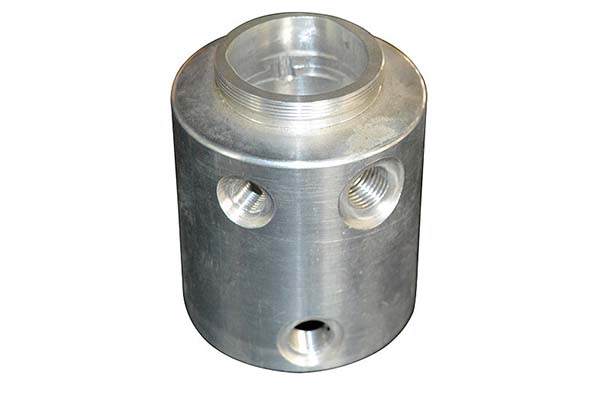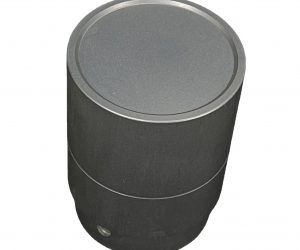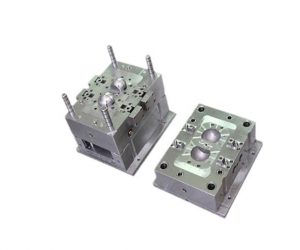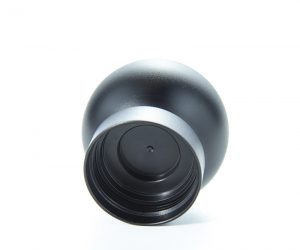1. Introduction
In the realm of product development, mechanical prototypes play a pivotal role. Whether you're in the automotive, aerospace, or consumer electronics industry, understanding mechanical prototypes is crucial for the success of your project. Yigu Technology will delve into what mechanical prototypes are, how they are created, their benefits, and how to make the most of them in your product development process.
2. Defining Mechanical Prototypes
2.1 What Exactly is a Mechanical Prototype?
A mechanical prototype is a physical representation of a mechanical design. It is used to test and validate the functionality, form, and fit of a product or component before mass production. Unlike a simple mock - up, a mechanical prototype is designed to closely mimic the real - world performance of the final product. For example, in the development of a new power tool, the mechanical prototype would incorporate the actual motor, gears, and housing design to test how the tool operates under normal use conditions.
2.2 Key Components of a Mechanical Prototype
- Structural Elements: These form the backbone of the prototype. In a robotic arm prototype, the metal frames and joints that support the movement of the arm are structural elements. They need to be strong enough to withstand the forces exerted during operation.
- Moving Parts: Components such as gears, shafts, and linkages are essential for prototypes where motion is involved. In a prototype of a bicycle drivetrain, the chain, sprockets, and derailleur are moving parts that need to work in harmony.
- Power Systems: If the product requires power, the prototype will include a power source. This could be a battery for a portable device or an electrical connection for a larger machine. For Yigu Technology instance, a prototype of an electric car will have a mock - up of the battery pack and the electrical system to test power consumption and performance.
3. The Process of Creating Mechanical Prototypes
3.1 Design Phase
- Concept Sketching: This is the initial stage where ideas are put on paper. Designers create rough sketches of the mechanical prototype, focusing on the overall shape, function, and major components. For example, when designing a new lawnmower prototype, the sketch might show the shape of the cutting deck, the position of the engine, and the handle design.
- 3D Modeling: Using computer - aided design (CAD) software, designers transform the concept sketches into detailed 3D models. This allows for a more accurate visualization of the prototype and enables the calculation of dimensions, masses, and mechanical properties. In the case of an aircraft engine prototype, 3D modeling helps in designing complex turbine blades with precise aerodynamic shapes.
- Simulation and Analysis: Before moving to the physical build, simulations are run on the 3D models. This includes stress analysis to ensure that components can withstand the expected loads, kinematic analysis for moving parts, and thermal analysis for products that generate heat. For a prototype of a high - performance computer cooling system, thermal analysis helps in optimizing the design to prevent overheating.
3.2 Material Selection
- Mechanical Properties: The choice of material depends on the mechanical requirements of the prototype. For components that need to be strong and lightweight, such as in aerospace applications, materials like aluminum alloys are often used. Titanio is preferred for parts that require high strength and corrosion resistance, like in medical implants.
- Cost Considerations: While high - performance materials may be ideal in terms of functionality, cost can be a limiting factor. In consumer product development, where cost - effectiveness is crucial, materials like plastics are commonly used. For example, in the production of a children's toy mechanical prototype, injection - molded plastic parts are often chosen due to their low cost and ease of manufacturing.
- Manufacturability: The material should also be easy to work with using the chosen manufacturing processes. Some materials may be difficult to machine or form, which can increase production time and cost. For instance, certain high - strength alloys may require specialized machining techniques, while plastics can be easily molded into complex shapes.
3.3 Manufacturing Phase
- Traditional Machining Methods:
- Lavorazione CNC: Computer - Numerical - Control (CNC) machining is a widely used method for creating mechanical prototypes. It allows for high - precision machining of metal and plastic parts. For Yigu Technology example, in the production of a prototype of a custom - designed gear, CNC machining can accurately cut the teeth profile.
- Lathe Work: Lathes are used to shape cylindrical parts. In the creation of a prototype shaft for a mechanical transmission, a lathe can be used to turn the metal rod to the required diameter and length.
- Milling: Milling machines are used to remove material from a workpiece to create complex shapes. In the production of a prototype engine block, milling is used to create the combustion chambers and coolant passages.
- Produzione additiva (Stampa 3D):
- Fused Deposition Modeling (FDM): This is a popular 3D printing method for creating mechanical prototypes. It works by extruding a thermoplastic filament layer by layer to build the part. FDM is often used for creating quick and inexpensive prototypes, such as in the development of a prototype housing for a small electronic device.
- Selective Laser Sintering (SLS): SLS uses a laser to sinter powdered materials, such as nylon or metal powders, into a solid part. It is suitable for creating prototypes with complex geometries and high - strength requirements. For Yigu Technology example, in the aerospace industry, SLS can be used to create prototype brackets with internal lattice structures for weight reduction.
4. Case Studies
4.1 Automotive Industry: Development of a New Transmission System
- Problem: An automotive company was developing a new, more efficient transmission system. They needed to test the mechanical design to ensure smooth shifting, durability, and compatibility with the engine.
- Solution: They created a mechanical prototype using a combination of CNC - machined metal parts and 3D - printed plastic components for non - critical parts. The prototype was tested on a dynamometer to simulate real - world driving conditions.
- Result: Through testing the prototype, they discovered several design flaws in the gear - shifting mechanism. These were fixed, and the final product was a more reliable and efficient transmission system, which helped the company gain a competitive edge in the market.
4.2 Aerospace Industry: Design of a New Aircraft Wing Component
- Problem: An aerospace firm was designing a new lightweight and strong wing component. They needed to validate the structural integrity and aerodynamic performance of the design.
- Solution: They used selective laser sintering to create a mechanical prototype of the component using a high - strength titanium alloy. The prototype was tested in a wind tunnel and subjected to various load - testing scenarios.
- Result: The tests on the prototype revealed that the original design had some aerodynamic inefficiencies. After making design modifications based on the test results, the final component was more aerodynamically efficient, leading to reduced fuel consumption and increased aircraft performance.
5. Conclusion
Yigu Technology Mechanical prototypes are an invaluable tool in the product development process. They offer numerous benefits, including cost - savings, improved product performance, and accelerated time - to - market. However, like any process, there are challenges that need to be addressed, such as material limitations, precision issues, and intellectual property concerns. By understanding these aspects and learning from successful case studies, companies can make the most of mechanical prototypes in their product development projects. Whether you're a small startup or a large multinational corporation, investing in well - designed and well - tested mechanical prototypes can lead to more successful product launches and a stronger competitive position in the market.



